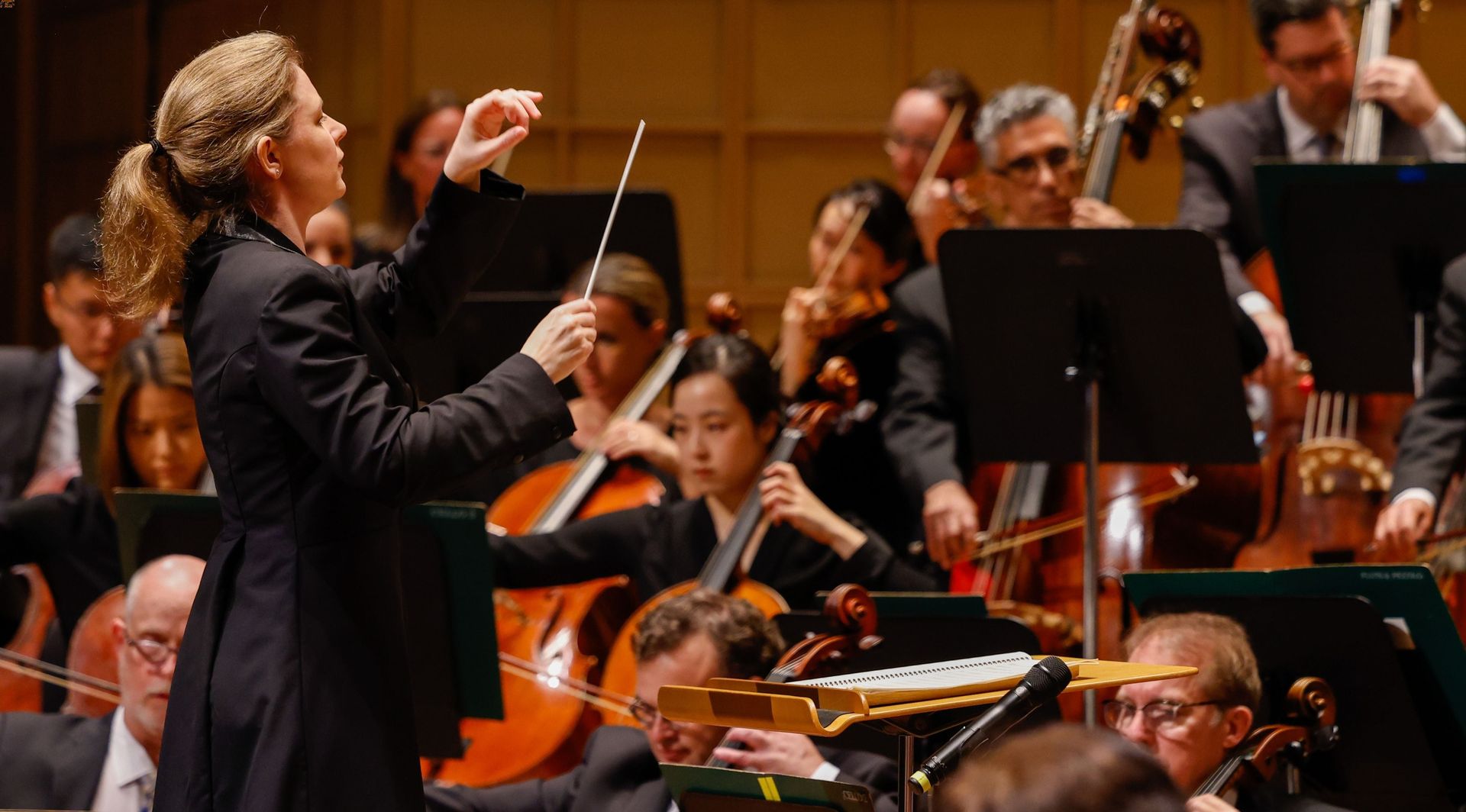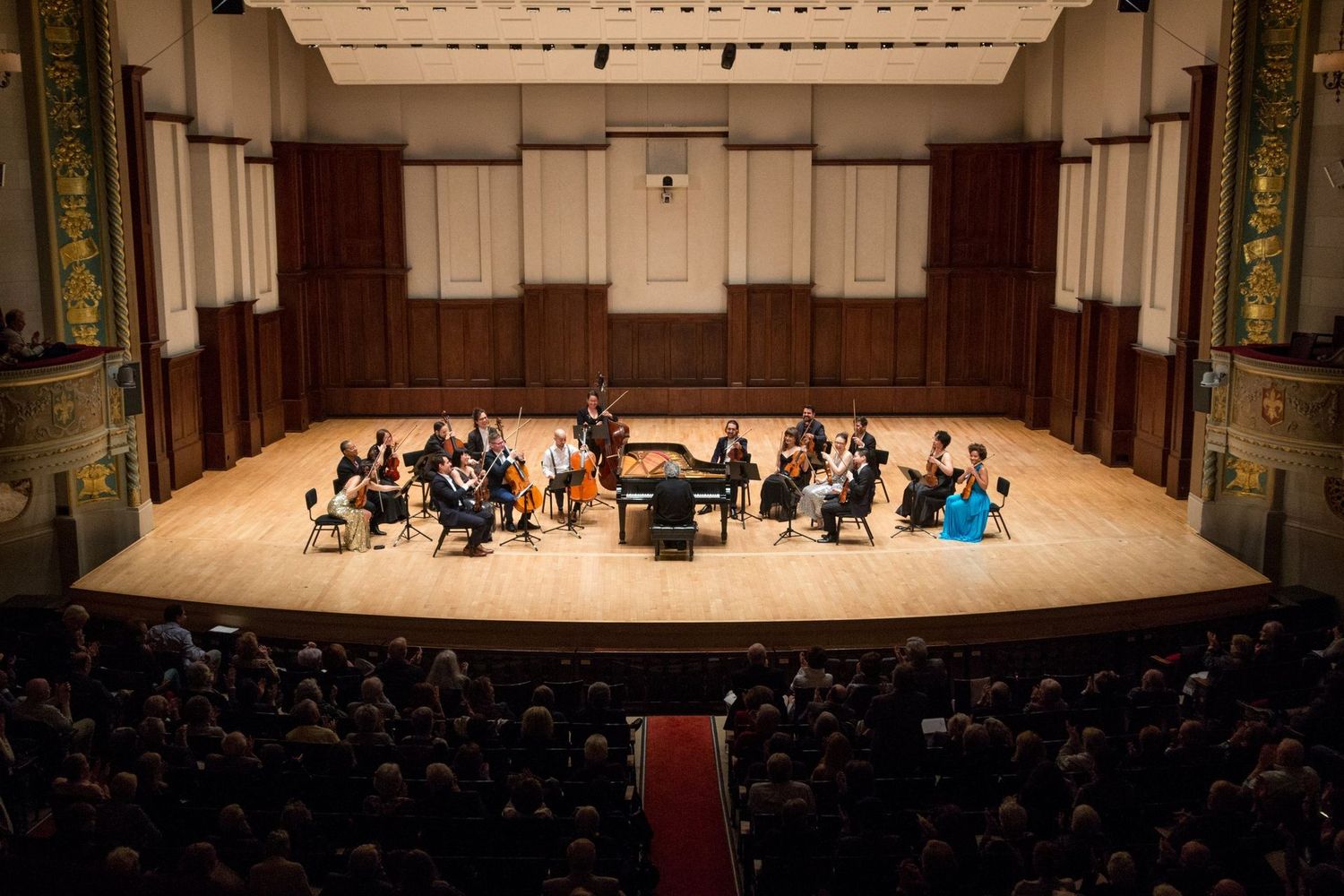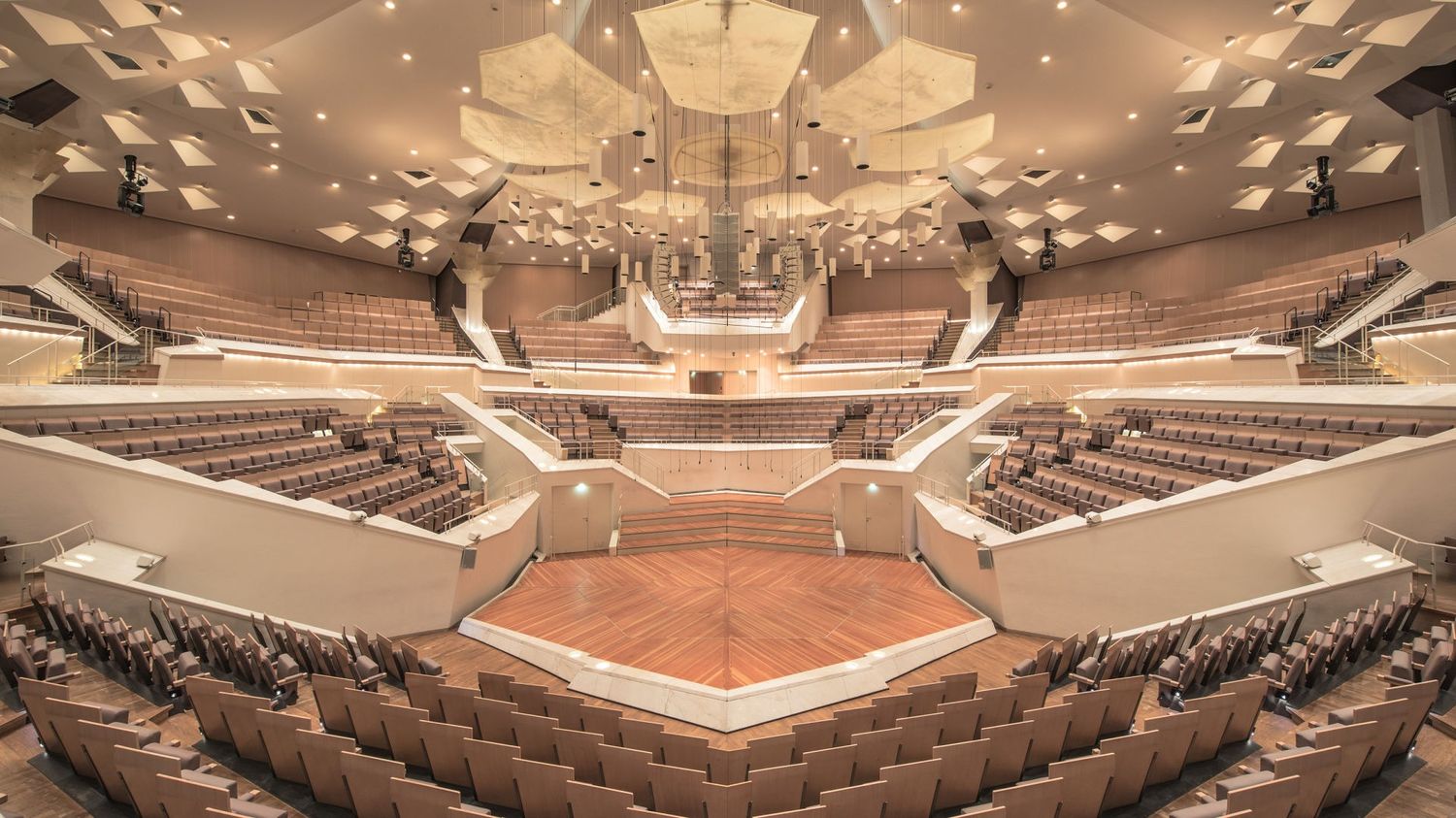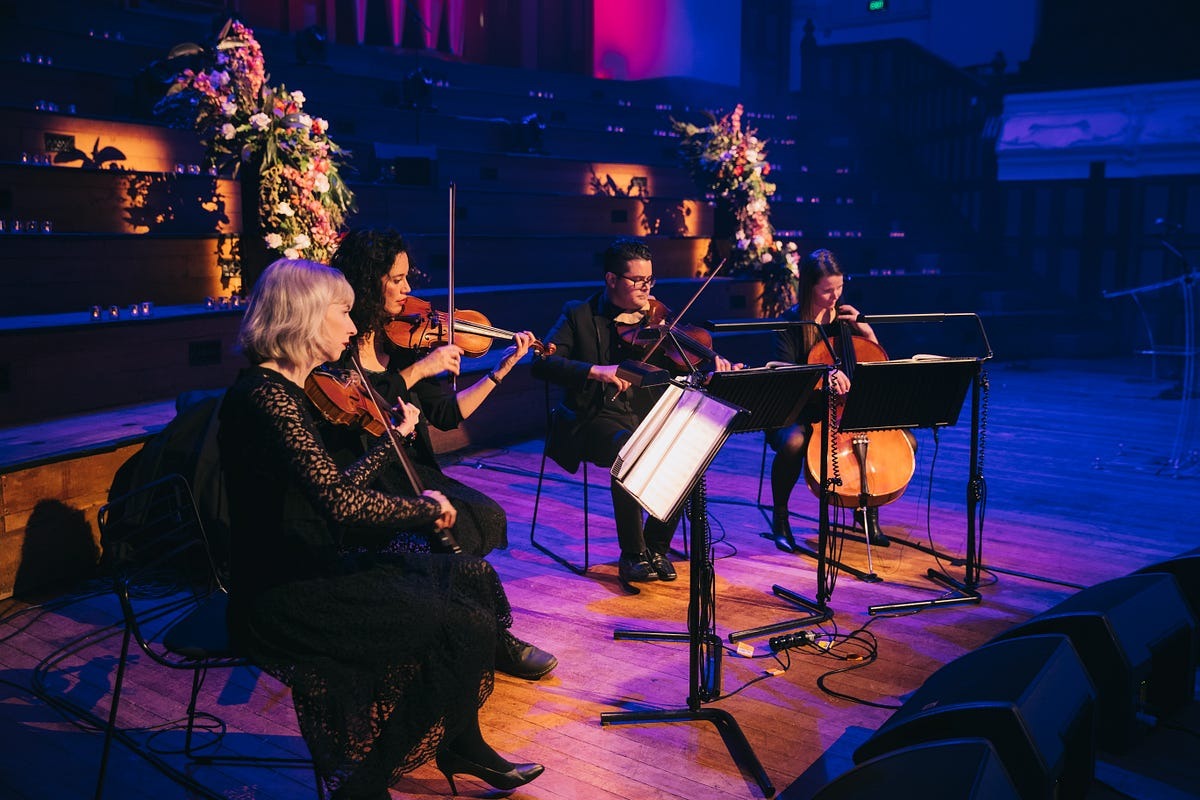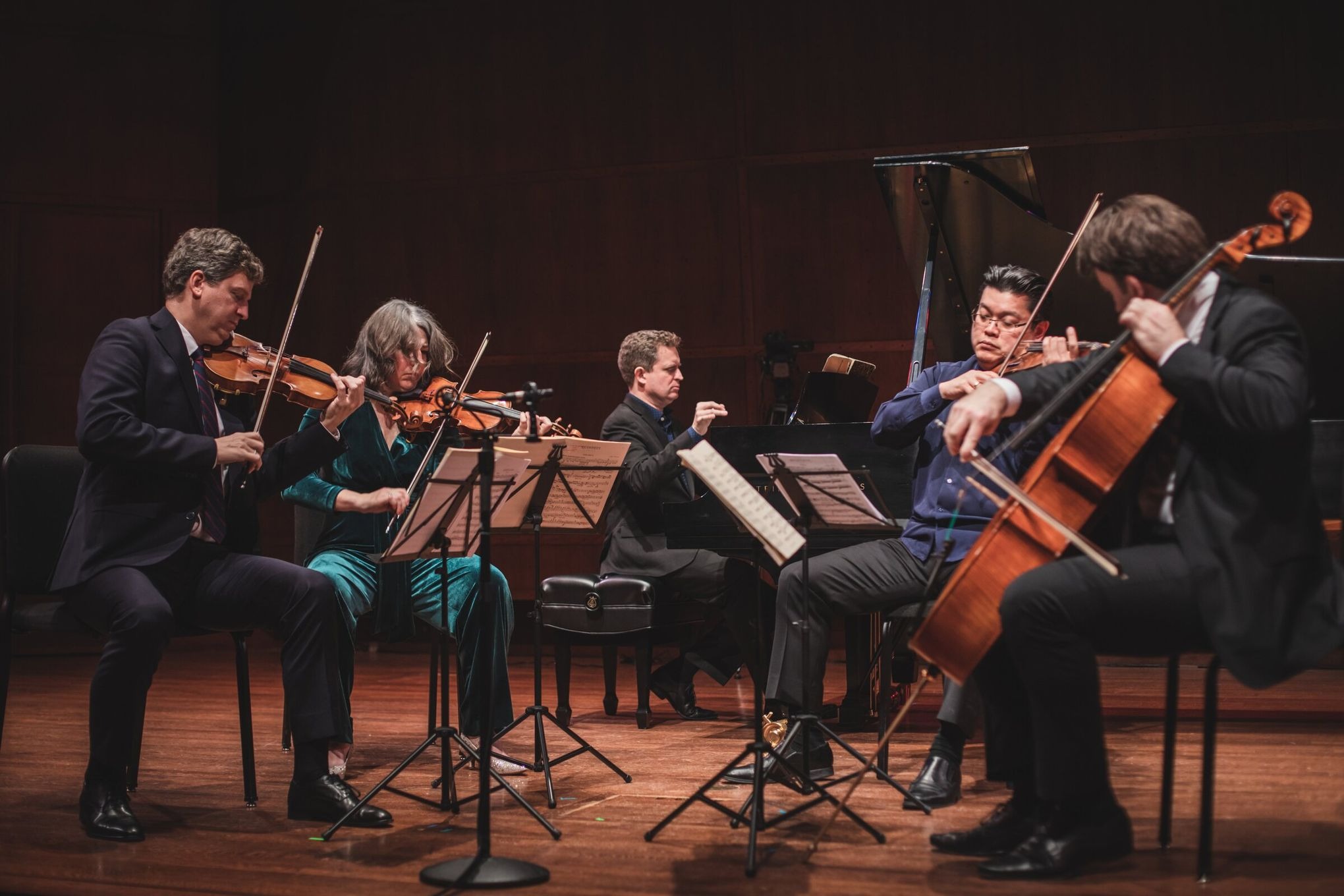Home>Events & Info>Chamber Music>How To Process Chamber Music Recordings
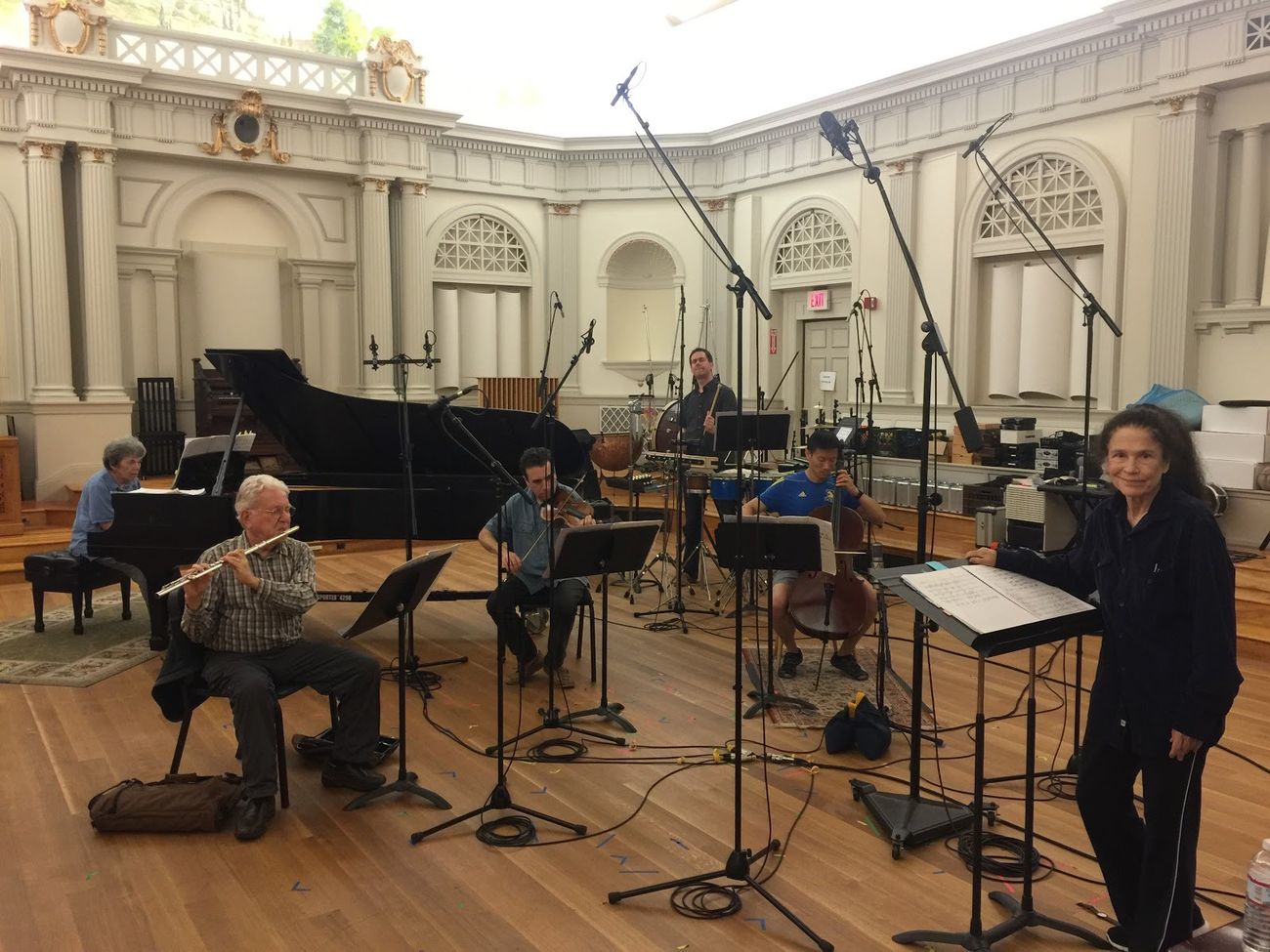

Chamber Music
How To Process Chamber Music Recordings
Modified: January 22, 2024
Learn how to process chamber music recordings with our helpful guide. Discover techniques for capturing the unique dynamics and nuances of chamber music performances.
(Many of the links in this article redirect to a specific reviewed product. Your purchase of these products through affiliate links helps to generate commission for AudioLover.com, at no extra cost. Learn more)
Table of Contents
Introduction
Chamber music is a genre that has been cherished by music enthusiasts for centuries. It is an intimate form of classical music that is performed by a small group of musicians, typically one player per part. The delicate interplay between instruments and the intimate setting in which it is performed create a unique and captivating experience for both musicians and listeners.
For musicians and recording engineers, capturing the essence of chamber music in a recording can be a challenging yet rewarding endeavor. The goal is to recreate the intimate and expressive qualities of a live performance while maintaining a balanced and accurate representation of each instrument.
In this article, we will explore the process of recording chamber music, from selecting the music to mastering the final recording. We will also discuss the equipment needed and the techniques involved in capturing the essence of chamber music in a recording. Whether you are a musician, a recording engineer, or simply an enthusiast looking to learn more about the intricacies of chamber music recordings, this article will provide you with the knowledge and guidance you need to get started in this fascinating world.
Equipment Needed
Before diving into the process of recording chamber music, it’s essential to have the right equipment on hand. While you don’t need a professional studio setup, having a few key components can make a significant difference in the quality of your recordings.
Here are the essential pieces of equipment you’ll need:
- Microphones: Invest in a pair of high-quality condenser microphones for capturing the nuances of each instrument. Small diaphragm condenser microphones are commonly used for recording chamber music due to their ability to handle high sound pressure levels and provide excellent detail.
- Microphone Stands: Sturdy microphone stands are crucial for achieving proper microphone positioning. Look for stands that are adjustable, allowing you to position the microphones at the ideal height and angle for each instrument.
- Preamp: A good quality preamp will help boost the signal from the microphones before it reaches your recording device. Look for a preamp with low noise and transparent sound reproduction to maintain the integrity of the audio.
- Audio Interface: An audio interface is necessary to connect your microphones to your computer or recording device. Choose an interface that has high-quality converters and sufficient inputs to accommodate the number of microphones you’ll be using.
- Headphones: A reliable set of headphones will allow you to monitor the audio as you’re recording. Look for headphones that provide accurate sound reproduction and comfortable fit, as you may be wearing them for extended periods.
- Recording Device: Whether you choose to record to a computer, a standalone recorder, or a digital audio workstation (DAW), ensure that your recording device has sufficient storage capacity and the capability to capture high-quality audio.
- Room Treatment: Although not technically “equipment,” proper room treatment is crucial for achieving a clean and accurate recording. Consider using acoustic panels, diffusers, and bass traps to minimize reflections and control room resonance.
Take the time to research and invest in quality equipment that fits your budget. While it might seem like a significant expense, having reliable and high-quality gear will ultimately enhance the quality of your chamber music recordings.
Selecting the Music
Selecting the right repertoire for your chamber music recording is essential to showcasing the beauty and diversity of the genre. Consider the following factors when choosing the music:
- Ensemble Size: Chamber music can be performed by duos, trios, quartets, or larger ensembles. Consider the capabilities and dynamics of your ensemble when selecting the music. Each instrument should have a prominent role while maintaining a balanced and cohesive sound.
- Style and Period: Chamber music spans various styles and periods, from the classical works of Mozart and Beethoven to the modern compositions of composers like Bartók and Stravinsky. Choose music that aligns with the musical preferences and strengths of your ensemble.
- Diversity: Aim for a varied program that showcases different moods, tempos, and musical forms. This will keep your listeners engaged and provide a well-rounded representation of chamber music.
- Challenge Level: Consider the technical and musical demands of the selected repertoire. Choose pieces that challenge your ensemble without overwhelming them. Strive for a balance between showcasing their skills and ensuring a polished performance.
- Personal Connection: It can be beneficial to choose music that resonates with you and your ensemble on a personal level. This emotional connection can enhance the passion and depth of your performance.
Research the repertoire and listen to different recordings to gain a deeper understanding of the music. Consider consulting with your ensemble members and seeking the guidance of experienced chamber musicians or coaches for their insights on the selection process.
Remember, selecting the music is an important step in creating a compelling chamber music recording. Choose pieces that highlight the strengths of your ensemble, provide variety, and create a captivating musical journey for your listeners.
Setting Up the Recording Space
The recording space plays a crucial role in capturing the essence of chamber music. Here are some key considerations when setting up your recording space:
- Acoustics: Choose a room with favorable acoustics for recording chamber music. Look for a space that has a balanced reverberation and minimal background noise. Avoid rooms with excessive echo or flutter echoes, as they can negatively impact the clarity of your recording.
- Size and Shape: The size and shape of the room can affect the overall sound. A larger room may provide a more spacious and resonant sound, while a smaller room can offer a tighter and focused sound. Experiment with different room sizes to find the best fit for your ensemble and desired sound.
- Furniture and Decor: The presence of furniture, curtains, carpets, and other objects in the room can help diffuse sound reflections, resulting in a more favorable recording environment. Pay attention to the arrangement of these items to achieve a balanced sound distribution.
- Isolation: Minimize external noise interference by choosing a room that is away from high-traffic areas or using soundproof materials to isolate the recording space. This will ensure that the focus remains on the performance and the capture of pristine audio.
- Temperature and Humidity: Maintain a stable temperature and humidity level in the recording space. Fluctuations in these factors can affect the performance of instruments and introduce unwanted noise into the recording.
Once you have chosen the ideal room for recording, consider the arrangement of the musicians within the space. Experiment with different positions to achieve the desired balance and blend between the instruments.
Remember, the recording space is the canvas upon which your chamber music will be captured. Taking the time to optimize the space will result in a more accurate and immersive recording.
Microphone Placement
Proper microphone placement is crucial for capturing the nuances and balance of the instruments in chamber music recordings. Here are some tips for achieving optimal microphone placement:
- General Rule: Place the microphones at a distance that allows for a balanced representation of the instruments while maintaining clarity. Start with a setup where the microphones are equidistant from the instruments to achieve a cohesive sound.
- Instrument-Specific Placement: Depending on the instruments involved, there are specific microphone placement techniques to consider. For string instruments, such as violins or cellos, placing the microphones at a distance of 2-3 feet in front of the instruments, pointing towards the sound holes, can yield excellent results. For piano recordings, consider positioning the microphones above and slightly behind the piano lid to capture the full range of the instrument.
- Stereo Techniques: Utilize stereo microphone techniques, such as the ORTF technique or the spaced pair technique, to create a sense of depth and width in your recording. These techniques involve precise angles and distances between the microphones to achieve a balanced stereo image.
- Experimentation: Don’t be afraid to experiment with different microphone positions to find the perfect balance and capture the desired sound. Move the microphones closer for a more intimate sound, or adjust the angles to highlight specific instruments within the ensemble.
- Monitoring: Use headphones or studio monitors to listen to the live feed while positioning the microphones. This will help you make real-time adjustments and ensure that the placement accurately captures the desired sound.
Additionally, consider using microphones with different polar patterns to capture a broader range of sound. For example, cardioid microphones can be positioned closer to isolate specific instruments, while omni-directional microphones can capture a more ambient sound.
Remember, microphone placement is both an art and a science. Take the time to experiment and listen critically to achieve the best possible balance and representation of the instruments in your chamber music recordings.
Adjusting Levels and Monitoring
Once you have placed the microphones in the optimal positions, the next step is to adjust the levels and monitor the audio during the recording process. Proper level adjustments and monitoring ensure that you capture a clean and balanced recording of your chamber music.
Here are some important considerations:
- Gain Staging: Set the gain levels on your audio interface or preamp to ensure that the input signal from the microphones is neither too low nor too high. Aim for a healthy signal level that avoids distortion while maintaining an adequate signal-to-noise ratio.
- Control Room Acoustics: Maintain a well-treated control room to accurately monitor the audio. Acoustic treatment, such as using studio monitors and bass traps, helps minimize coloration and reflections, allowing you to make accurate judgment on the recorded sound.
- Real-Time Monitoring: Use headphones or studio monitors to listen to the live feed while recording. Pay attention to the balance and presence of each instrument, and make any necessary adjustments to microphone placement or gain to achieve the desired sound.
- Dynamic Range: Be mindful of the dynamic range within the chamber music performance. Ensure that the softer passages are captured with enough detail, while also accounting for the louder moments to avoid clipping or distortion.
- Check for Noise: Listen for any unwanted noise or interference during the recording process. If you encounter noise issues, troubleshoot potential sources such as grounding problems, electrical interference, or equipment malfunctions.
Regularly monitor the recorded audio during breaks to assess the quality and make any necessary adjustments. It’s better to address issues in real-time rather than discovering them in the post-processing stage.
Remember, adjusting levels and maintaining accurate monitoring are integral parts of the recording process. By paying attention to these aspects, you can ensure that your chamber music recordings are clean, well-balanced, and true to the original performance.
Capturing the Recording
Now that you have set up your recording space, positioned your microphones, and adjusted the levels, it’s time to capture the chamber music performance. While capturing the recording, there are several key points to keep in mind:
- Communication: Ensure clear communication between the ensemble members and the recording engineer. Establish cues or signals to indicate the start and end of the recording to ensure a synchronized performance.
- Multiple Takes: Consider recording multiple takes of each piece to capture different interpretations and nuances. This provides flexibility during the editing phase and gives you options to choose from in order to create the best possible final recording.
- Precision: Pay attention to details and precision during the performance. Aim for clean entrances and exits, accurate intonation, and well-coordinated dynamics and phrasing. Attention to these details will help maintain a polished and professional recording.
- Emotional Expression: While technical precision is crucial, chamber music also relies on the emotional expression conveyed through the performance. Encourage the musicians to tap into the emotional depth of the music and bring out its unique character.
- Audience Presence: Consider the presence of an audience, if applicable, during the recording. Chamber music can thrive in a live setting, and the energy and response from a live audience can add to the overall performance and captured experience.
- Take Breaks: Encourage breaks between recording sessions to alleviate fatigue and maintain focus. Fatigue can impact the performance, so ensure that the musicians are well-rested and refreshed for each take.
Throughout the recording process, it is essential to maintain a supportive and encouraging environment to bring out the best in the musicians. Encourage creativity and experimentation while staying on track with the overall vision for the recording.
Remember, capturing the recording is an exciting and creative process. By paying attention to the details while maintaining a balance between technical precision and emotional expression, you can capture the true essence of the chamber music performance in your recordings.
Post-Processing Techniques
Once you have captured the chamber music recording, the next step is to apply post-processing techniques to enhance the overall sound quality and achieve a polished final product. Here are some essential techniques to consider:
- Editing: Use editing software to trim any unwanted noise or extraneous sounds between takes. Smooth out any abrupt transitions or inconsistencies in timing, dynamics, or performance to create a seamless and cohesive recording.
- Equalization (EQ): Use EQ to balance the frequency spectrum and enhance the tonal qualities of each instrument. Make subtle adjustments to bring out the desired characteristics and create a balanced mix.
- Compression: Apply compression to control the dynamic range of the recording. This helps maintain a consistent level throughout the performance and ensures that softer passages are audible without overpowering the louder sections.
- Reverb and Ambience: Add reverb or ambience to recreate the acoustic environment of a concert hall or chamber setting. Carefully adjust the amount and type of reverb to complement the recording and enhance the sense of space.
- Stereo Imaging: Use stereo imaging techniques to create a spacious and realistic soundstage. Pan the instruments accordingly to create a sense of depth and width, ensuring that each instrument is well-defined in the stereo field.
- Noise Reduction: Apply noise reduction techniques to minimize any background noise or unwanted artifacts that may have been captured during the recording process. Be cautious not to overly suppress the natural room ambience or affect the integrity of the original performance.
It’s important to have a critical listening approach during the post-processing stage. Use reference tracks or consult with experienced engineers to compare your recordings and strive for a professional and balanced sound.
While utilizing these techniques, it’s essential to preserve the authenticity and integrity of the chamber music performance. Strive for a transparent and natural sound that accurately represents the artistic intent of the musicians.
Remember, post-processing is a creative and subjective step in the recording process. Experiment, listen critically, and make adjustments to enhance the overall sonic quality of your chamber music recording.
Editing and Mixing the Tracks
Editing and mixing the tracks are crucial steps in the post-production process of chamber music recordings. These processes involve fine-tuning and balancing the individual instrument tracks to create a cohesive and polished final mix. Here are some key considerations:
- Track Editing: Begin by closely listening to each individual instrument track and making any necessary cuts or edits to remove any unwanted noises or mistakes. This ensures a clean and professional-sounding recording.
- Volume Balancing: Adjust the volume levels of each instrument track to achieve a proper balance. Pay attention to the dynamics of the performance and ensure that no instrument overpowers or gets overshadowed by another.
- Panning and Stereo Imaging: Use panning techniques to position each instrument within the stereo field. This creates a sense of space and separation, allowing the listener to hear the individual instruments more clearly. Experiment with panning positions to achieve the desired depth and width of the mix.
- EQ and Tone Shaping: Apply equalization to shape the tonal characteristics of each instrument track. Use EQ to enhance the clarity and definition of each instrument, while also removing any unwanted resonances or frequencies that may be masking the natural sound.
- Dynamics and Compression: Apply dynamics processing, such as compression or limiting, to control the dynamic range of the mix. This ensures that the softer passages are audible while preventing any clipping or distortion during louder sections.
- Ambience and Reverb: Add a touch of ambience or reverb to create a sense of acoustic space. This helps to blend the instruments together and adds a natural reverberation that emulates the ambiance of a concert hall or chamber setting.
- Sonic Cohesion: Continuously listen to the mix as a whole and make adjustments to ensure consistency and coherence among the instrument tracks. Aim for a cohesive sound where all the instruments work together harmoniously.
While mixing, reference other professionally mixed chamber music recordings as a benchmark for achieving a balanced and natural sound. It can also be helpful to take breaks and listen with fresh ears to make accurate judgments during the mixing process.
Remember, the goal of editing and mixing is to enhance the overall sonic quality and create a harmonious blend of the individual instruments. By paying attention to the details and maintaining a cohesive sound, you can create a professional and captivating chamber music recording.
Mastering the Final Recording
Mastering is the final stage in the post-production process of chamber music recordings. It involves fine-tuning the overall sound of the mix and preparing it for distribution. Here are the key steps involved in mastering the final recording:
- EQ and Compression: Use EQ and compression to refine the tonal balance and dynamic range of the entire mix. Ensure that the frequency spectrum is well-balanced and that the dynamics are controlled to create a cohesive and polished sound.
- Stereo Enhancement: Apply stereo enhancement techniques to widen the stereo image and create an immersive listening experience. Use tools like stereo widening, stereo imaging, or mid-side processing to add depth and spaciousness to the mix.
- Volume and Loudness: Adjust the overall volume of the recording to achieve a competitive loudness level while maintaining clarity and dynamics. Use techniques such as peak limiting or compression to increase the perceived loudness without sacrificing the integrity of the mix.
- Spacing and Track Sequencing: Ensure proper spacing between tracks and carefully sequence the order of the pieces. Consider the flow and dynamics of the recording, ensuring a smooth transition from one track to another.
- Quality Control: Conduct a thorough quality check of the final mastered recording. Listen for any artifacts, clicks, pops, or any other undesirable artifacts that may have occurred during the mastering process. Make any necessary adjustments or re-mastering if needed.
- Metadata and File Export: Add metadata such as track titles, artist information, and album artwork to the recording files. Ensure that the files are exported in the appropriate format and quality for the intended distribution platforms.
It is highly recommended to have your mastered recording reviewed by trusted ears, such as other musicians or mastering engineers, to gain valuable feedback and ensure the best possible quality.
Remember, mastering is the final touch that brings the whole recording to its full potential. By applying the right techniques and giving attention to detail, you can achieve a professional and engaging final product for your chamber music recording.
Conclusion
Recording and producing chamber music can be a rewarding and fulfilling experience for both musicians and audio engineers. It allows for the preservation and dissemination of the intimate and expressive qualities that make chamber music so captivating.
In this article, we explored the step-by-step process of recording chamber music, from selecting the music and setting up the recording space to microphone placement and post-processing techniques. We discussed the importance of equipment, communication, and meticulous attention to detail in capturing the essence of the performance.
Throughout the recording process, it’s crucial to maintain a balance between technical precision and emotional expression. Strive to showcase the strengths of each instrument and create a cohesive and engaging musical experience for the listeners.
Remember, the art of recording chamber music requires both technical skill and artistic sensibility. It is a delicate dance between capturing the essence of the performance and presenting it in a polished and captivating way. By mastering the recording process, you can create recordings that truly represent the beauty and intimacy of chamber music.
So, whether you’re a musician, an audio engineer, or an enthusiast eager to embark on the chamber music recording journey, embrace the challenges, invest in quality equipment, and let your passion for the music guide your every step. Happy recording!


